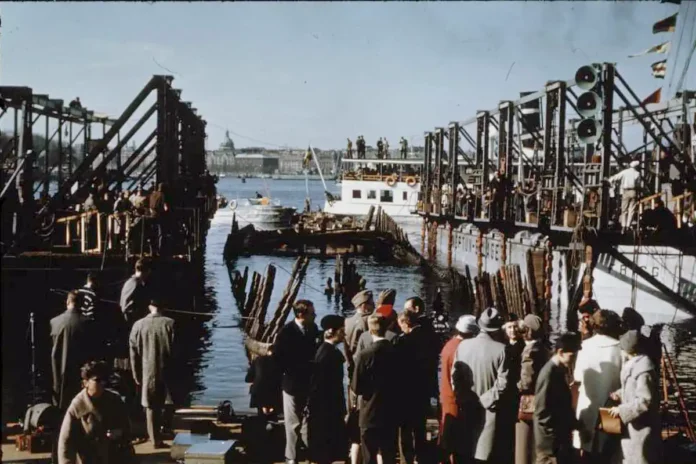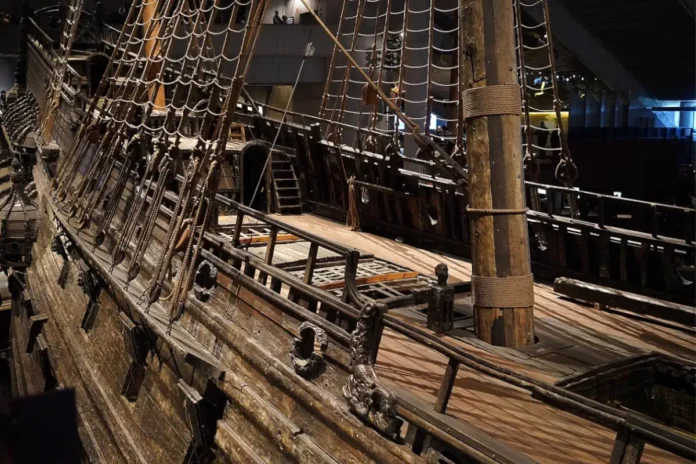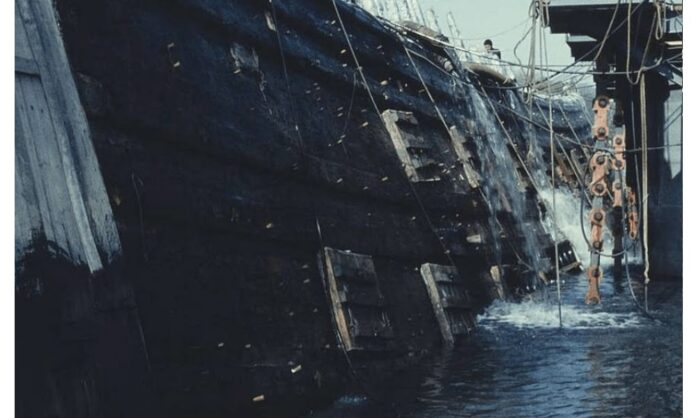The Vasa Ship Museum in Stockholm houses the world’s only preserved 17th-century warship, the Vasa, which sank on its 1628 maiden voyage and was salvaged in 1961.
With 98% of its original structure intact, this 69-meter vessel dazzles with intricate carvings and offers insights into Sweden’s maritime history through immersive exhibits, films, and guided tours. A must-see blend of history, artistry, and engineering.
A journey from tragedy to triumph
Commissioned by King Gustavus Adolphus, the Vasa was designed by shipbuilder Henrik Hybertsson to dominate the Baltic Sea. It proudly bore the name of Sweden’s ruling dynasty, the House of Vasa.
Tragically, it capsized minutes into its maiden voyage due to top-heavy design flaws, claiming up to 50 lives. Salvaged in 1961 after 333 years underwater, its preservation in cold, brackish waters ensured remarkable integrity.
Witness the fully restored warship
The museum’s centerpiece is the Vasa, displayed in a climate-controlled hall with three masts mirroring its original height. Over 98% original, it reveals 17th-century shipbuilding techniques and naval warfare strategies. Exhibits include artifacts like crew belongings, weaponry, and a recreated 17th-century workshop demonstrating traditional craftsmanship.
Engaging exhibits
- Multimedia & interactive displays: Explore life aboard the ship via films, audio guides (available in multiple languages), and hands-on exhibits.
- Artifacts & scale models: View personal items, tools, and replicas of the Vasa and contemporaries.
- Educational programs: Guided tours and workshops cater to all ages, highlighting the ship’s historical and cultural significance.
The remarkable salvage of 1961
Marine technician Anders Franzén spearheaded the Vasa’s recovery, using sonar and diving expeditions to locate the wreck. Over two years, divers attached pontoons to the hull, gradually lifting it with compressed-air systems.
Restoration and preservation
Post-recovery, the Vasa underwent decades of stabilization using polyethylene glycol to halt decay. A team of experts in marine archaeology, woodworking, and chemistry ensured its meticulous restoration.
Conclusion
The Vasa Ship Museum is a triumph of historical preservation, offering a window into Sweden’s naval past. With over 25 million visitors since its 1990 opening, it remains a testament to human ingenuity and the enduring legacy of the Vasa.
Nearby attractions
- Skansen Open-Air Museum: Sweden’s oldest outdoor museum, featuring historic buildings and cultural demonstrations.
- Nordic Museum: Explores Swedish cultural heritage through art, fashion, and textiles.
- Gröna Lund: A waterfront amusement park with rides and concerts.
- Junibacken: This children’s museum, inspired by the works of famous Swedish author Astrid Lindgren, is perfect for families. It offers interactive exhibits and storytelling activities.



















